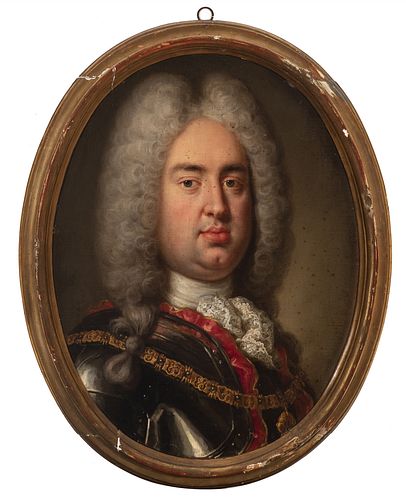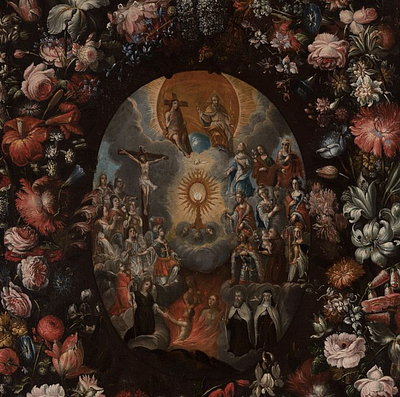Spanish school; first third of the eighteenth century. "Portrait of a knight with the Order of the Golden Fleece". Oil on canvas attached to board.
Lot 42
About Seller
Setdart Auction House
Carrer Aragó 346
Barcelona
Spain
Setdart Subastas was born in 2004 and is currently the first online art auction in Spain with solidity, prestige and reliability guaranteed by our more than 60,000 users. Setdart has a young, dynamic and enterprising team ready to successfully manage the purchase and sale of art works through custom...Read more
Estimate:
EUR€1,500 - EUR€2,000
$1,612.90 - $2,150.54
Absentee vs Live bid
Two ways to bid:
- Leave a max absentee bid and the platform will bid on your behalf up to your maximum bid during the live auction.
- Bid live during the auction and your bids will be submitted real-time to the auctioneer.
Bid Increments
| Price | Bid Increment |
|---|---|
| EUR€0 | EUR€10 |
| EUR€200 | EUR€25 |
| EUR€500 | EUR€50 |
| EUR€1,000 | EUR€100 |
| EUR€3,000 | EUR€200 |
| EUR€5,000 | EUR€500 |
| EUR€10,000 | EUR€1,000 |
| EUR€20,000 | EUR€2,000 |
| EUR€50,000 | EUR€5,000 |
About Auction
By Setdart Auction House
Jul 14, 2021
Set Reminder
2021-07-14 06:30:00
2021-07-14 06:30:00
America/New_York
Bidsquare
Bidsquare : OLD MASTERS
https://www.bidsquare.com/auctions/setdart-auction-house/old-masters-7202
Setdart Auction House sofia@setdart.com
Setdart Auction House sofia@setdart.com
- Lot Description
Spanish school; first third of the eighteenth century. "Portrait of a knight with the Order of the Golden Fleece". Oil on canvas attached to board. Presents frame of the late eighteenth century. Measures: 60 x 46 cm; 68 x 53,5 cm (frame). Headdressed with white wig, the character is dressed in armor. Around his neck hangs the Collar of the Order of the Golden Fleece, with the golden fleece hanging from it in front of his chest. Clearly, the character shown would be one of those decorated at the time with the best known emblem of the Order of the Golden Fleece, an order of chivalry founded in 1429 by the Duke of Burgundy and Count of Flanders, Philip III of Burgundy, whose relationship with the Crown of Spain comes from the marriage between Joan and Philip and continues to the present day. The protagonist of this work looks directly at the viewer in an emphatic, authoritative and sober way, but not with disdain. His attitude, which is defined by his pose, his gesture, and his shining armor, make us understand that the portrayed is a character of high social status, who enjoys the recognition and admiration of his class. In the 18th century, the panorama of European portraiture was varied and broad, with numerous influences and largely determined by the taste of both the clientele and the painter himself. However, this century saw the birth of a new concept of portraiture, which would evolve throughout the century and unify all the national schools: the desire to capture the personality of the human being and his character, beyond his external reality and his social rank, in his effigy. During the previous century, portraiture had become consolidated among the upper classes, and was no longer reserved only for the court. For this reason, the formulas of the genre, as the 17th century progressed and even more so in the 18th century, became more relaxed and moved away from the ostentatious and symbolic official representations typical of the Baroque apparatus. On the other hand, the eighteenth century will react against the rigid etiquette of the previous century with a more human and individual conception of life, and this will be reflected in all areas, from the furniture that becomes smaller and more comfortable, replacing the large gilded and carved furniture, to the portrait itself, which will come to dispense, as we see here, of all symbolic elements.
- Shipping Info
-
In-house shipping available. Please inquire at admin@setdart.com.
-
- Buyer's Premium



 EUR
EUR CAD
CAD AUD
AUD GBP
GBP MXN
MXN HKD
HKD CNY
CNY MYR
MYR SEK
SEK SGD
SGD CHF
CHF THB
THB














